 Sam Cooke achieved a bunch of fame and fortune singing boldly about his ignorance of history, biology, and other subjects (“Don’t Know Much About History”). I doubt I’ll get any of those aforementioned benefits, but let me boldly confess yet again that I don’t know much about mathematics.
Sam Cooke achieved a bunch of fame and fortune singing boldly about his ignorance of history, biology, and other subjects (“Don’t Know Much About History”). I doubt I’ll get any of those aforementioned benefits, but let me boldly confess yet again that I don’t know much about mathematics.
But I am pretty sure that when you are multiplying a string of numbers (without guidance 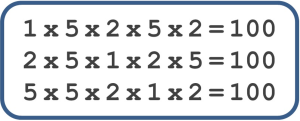 from parentheses), the relative position of the values really doesn’t matter—the result is the same.
from parentheses), the relative position of the values really doesn’t matter—the result is the same.
As you recall, Martin Seligman’s Theory of Well-Being asserts that to flourish as a fully realized human being, you need each of these five elements in your life: Positive Emotion, Engagement , Relationships, Meaning, and Accomplishment, which I’ve notated as a multiplication equation. (Don’t blame Dr. Seligman—the equation notation is my own elaboration.)
, Relationships, Meaning, and Accomplishment, which I’ve notated as a multiplication equation. (Don’t blame Dr. Seligman—the equation notation is my own elaboration.)
It’s really important that each and every one of the five elements is 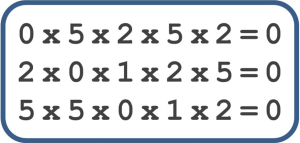 present to some degree. After all, if you replace any factor with 0, you get 0. Nada. Nothing. Zilch.
present to some degree. After all, if you replace any factor with 0, you get 0. Nada. Nothing. Zilch.
On the other hand, Seligman‘s Well-Being Theory does not specify how much of each factor must be present to create the optimal balance for any individual. Defining exactly what constitutes the perfect balance among the elements is deeply personal.
To enjoy a sense of well-being, one individual may value Positive Emotion much more highly than he values Engagement. Another individual may feel a stronger need for Accomplishment than she does for Relationships. And frankly, you may find that the balance across the factors changes over time, as you are shaped by your choices and your life experiences. The balance changes, but the ultimate result—that sense of well-being—is the same.
When you are seeking to find or create a Congruent Opportunity, so that you can achieve exponential performance, this question of relative value for the factors of well-being becomes incredibly significant. To illustrate this, let’s return to the thought experiment of visualizing congruence on a graph.
We know that 1 x 2 x 2 x 5 x 5=100. So let’s use those five values in a couple of “thought experiment” graphic examples of how the relative importance of the five elements of well-being define the “shape” to look for when you are considering competing opportunities to determine if they are a good “fit” for you—that is, provide an environment where you have the best theoretical probability of achieving well-being 100% of the time.
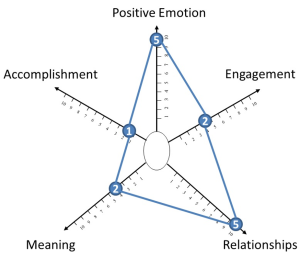 In this first example (left), Positive Emotion and Relationships are the top priorities. Meaning and Engagement are somewhat less important. And Accomplishment is present, but not a primary driver for this individual.
In this first example (left), Positive Emotion and Relationships are the top priorities. Meaning and Engagement are somewhat less important. And Accomplishment is present, but not a primary driver for this individual.
The second example (right) represents someone who is profoundly driven to achieve Accomplishments that have deep personal  Meaning, even at the cost of sacrificing Relationships and short-term Positive Emotion.
Meaning, even at the cost of sacrificing Relationships and short-term Positive Emotion.
As you contrast these two profiles, you can readily see that an opportunity that would satisfy the first person would not be at all conducive to well-being for the second. To show that this isn’t just a theoretical construct, let me introduce you to my husband, Steve. (Yes, I have his permission, and yes, he reads this blog. Yes, I am very blessed to be his wife.)
 Somewhere around age 9, as Steve was growing up in Indianapolis, he realized that he is a scientist. He experienced his greatest sense of fulfillment when he was exploring ideas, formulating and testing hypotheses, and understanding at a deep level how living organisms actually work. His childhood exploits, such as growing slime mold in the basement, became the basis for his eventual work as a Ph.D. microbiologist investigating the pathogen that causes Whooping Cough (Bordetella pertussis).
Somewhere around age 9, as Steve was growing up in Indianapolis, he realized that he is a scientist. He experienced his greatest sense of fulfillment when he was exploring ideas, formulating and testing hypotheses, and understanding at a deep level how living organisms actually work. His childhood exploits, such as growing slime mold in the basement, became the basis for his eventual work as a Ph.D. microbiologist investigating the pathogen that causes Whooping Cough (Bordetella pertussis).
After 30+ years of marriage, I’ll go out on a limb and chart for you how he would likely balance the five factors of well-being (as shown in the figure on the right). He is driven to deliver significant results in his 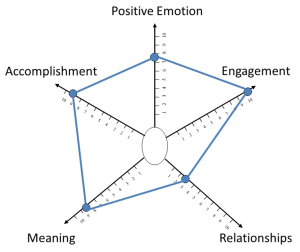 primary research interest (Accomplishment, Meaning), and loves nothing better than to become completely immersed in a challenging series of experiments at the bench (Engagement). Even the somewhat tedious aspects of research (such as streaking plates, counting colonies, recording data) bring joy to him (Positive Emotion), because it’s all part and parcel of doing good science. Being alone in the lab for hours, even days on end doesn’t bother him in the least. He values Relationships intensely, but his preference is to have only a few of them, and to invest in building them over a long period of time.
primary research interest (Accomplishment, Meaning), and loves nothing better than to become completely immersed in a challenging series of experiments at the bench (Engagement). Even the somewhat tedious aspects of research (such as streaking plates, counting colonies, recording data) bring joy to him (Positive Emotion), because it’s all part and parcel of doing good science. Being alone in the lab for hours, even days on end doesn’t bother him in the least. He values Relationships intensely, but his preference is to have only a few of them, and to invest in building them over a long period of time.
In contrast, my well-being “shape” is somewhat different from
 Steve’s. As you can see on the left, my sense of well-being comes from finding Meaning through my Relationships with people I work with, regardless of job content. I’ve changed careers at least a half-dozen times, and jobs more often than that—the actual content of my work and Accomplishment doesn’t really matter, as long as I’m Engaged, using any of my Talents and creating an up-beat environment for the people around me (Positive Emotion).
Steve’s. As you can see on the left, my sense of well-being comes from finding Meaning through my Relationships with people I work with, regardless of job content. I’ve changed careers at least a half-dozen times, and jobs more often than that—the actual content of my work and Accomplishment doesn’t really matter, as long as I’m Engaged, using any of my Talents and creating an up-beat environment for the people around me (Positive Emotion).
If you were to parachute Steve and me into a big picnic somewhere, you could probably see our individual searches for congruence playing out pretty clearly. I would approach the event as  an opportunity to meet new people, share funny personal stories, and relax into having a rowdy good time. Steve would approach this exact same opportunity as a time to quietly observe interesting organisms interacting from his outpost on the sidelines. Unless he runs into a good friend, he probably won’t engage in a lot of chit-chat. He’d prefer a more in-depth conversation on a topic of significance. Me? I’m swapping one-liners with any and everybody.
an opportunity to meet new people, share funny personal stories, and relax into having a rowdy good time. Steve would approach this exact same opportunity as a time to quietly observe interesting organisms interacting from his outpost on the sidelines. Unless he runs into a good friend, he probably won’t engage in a lot of chit-chat. He’d prefer a more in-depth conversation on a topic of significance. Me? I’m swapping one-liners with any and everybody.
One opportunity—two different ways to thrive in it. Well-being is in the “I” of the beholder.
For you to achieve and sustain exponential performance in work and in life, you must first become aware of your own “shape,” and second, you must consistently take action to find or create opportunities where you can optimize your experience and, in doing so, become self-energizing.
Yo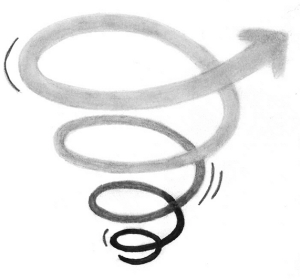 u become self-energizing when you work and live in an environment that fosters a virtuous cycle, where things tend to get better and better (the opposite of a vicious cycle, where things tend to get worse and worse). In this environment, the more you are able to flourish personally while achieving high performance in your career, the more motivated you are to invest even more effort, which yields an even greater sense of well-being and accomplishment. Wash, rinse, and repeat, on and on and on.
u become self-energizing when you work and live in an environment that fosters a virtuous cycle, where things tend to get better and better (the opposite of a vicious cycle, where things tend to get worse and worse). In this environment, the more you are able to flourish personally while achieving high performance in your career, the more motivated you are to invest even more effort, which yields an even greater sense of well-being and accomplishment. Wash, rinse, and repeat, on and on and on.
Creating this kind of environment, which you should now recognize as a Congruent Opportunity, requires strong self-awareness and self-management, as already noted. Additionally, it requires mutually beneficial alignment with the other people with whom you share your environment—say, a spouse, a boss, your friends, the people who report to you. A self-energizing individual magnifies his or her satisfaction and capacity by helping those “others” improve their own self-awareness and self-management; that is, by serving as a leader and role model. And at last, we’ve reached a definition for the third level of exponential performance.
So how do you get there? Ah, good question! One for another day…
~~~